Home was where it all started, as it so often does with great ideas.
For Fang Low, the 33-year-old founder of boutique co-living space Figment, it was growing up in a Tanjong Pagar shophouse filled with antiques and artwork, and formative years spent in a heritage-rich neighborhood, that cemented his deep, lifelong appreciation for the arts and local heritage. Even when school and a first job as a Goldman Sachs analyst took him on a brief detour away from his passions, he eventually found his way back. In 2019, he set up Figment as a way to showcase his beloved shophouses – by curating, conserving, and refurbishing them for a community of like-minded aficionados to live in.
But Low never saw Figment as just another co-living space. To him, these shophouses, rich in local history and architecturally-eclectic, are a natural platform to showcase Singapore’s design, arts, and crafts. He sees their creators as “our cultural ‘construction workers’”, artists whose works “provide the personality and vibrancy for our increasingly cookie-cutter living environments”.
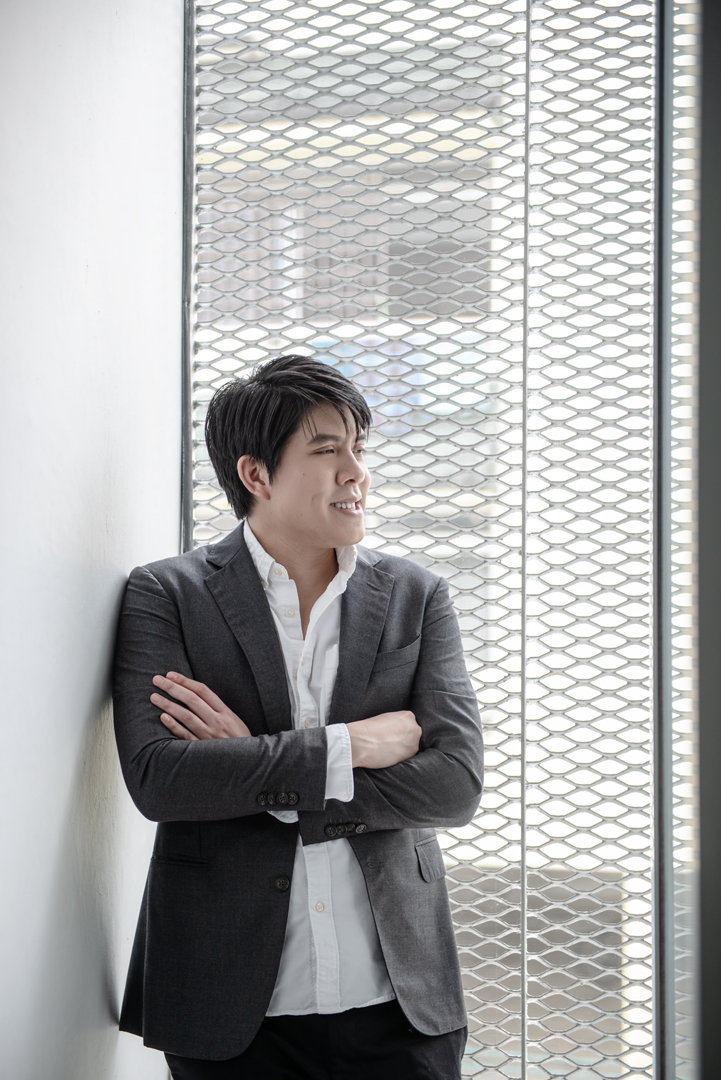
“At Figment, we want to reimagine home with art and design as a way of life, something we experience every day that reflects our personalities,” he says.
To wit: Among its array of shophouses up for rent, 24 in total today, are what it dubs its Case Study homes, or conservation shophouses that feature distinctive interiors, and readapted for modern use by local creators. The first of such three shophouses were reimagined and redesigned by local designers and artists including Ministry of Design, Scene Shang, and Studio Juju.
(Related: Case study — Homes)
- BRINGING THE ARTS HOME
- SHAPING THE FUTURE
- FROM HOME TO THE WORLD
BRINGING THE ARTS HOME
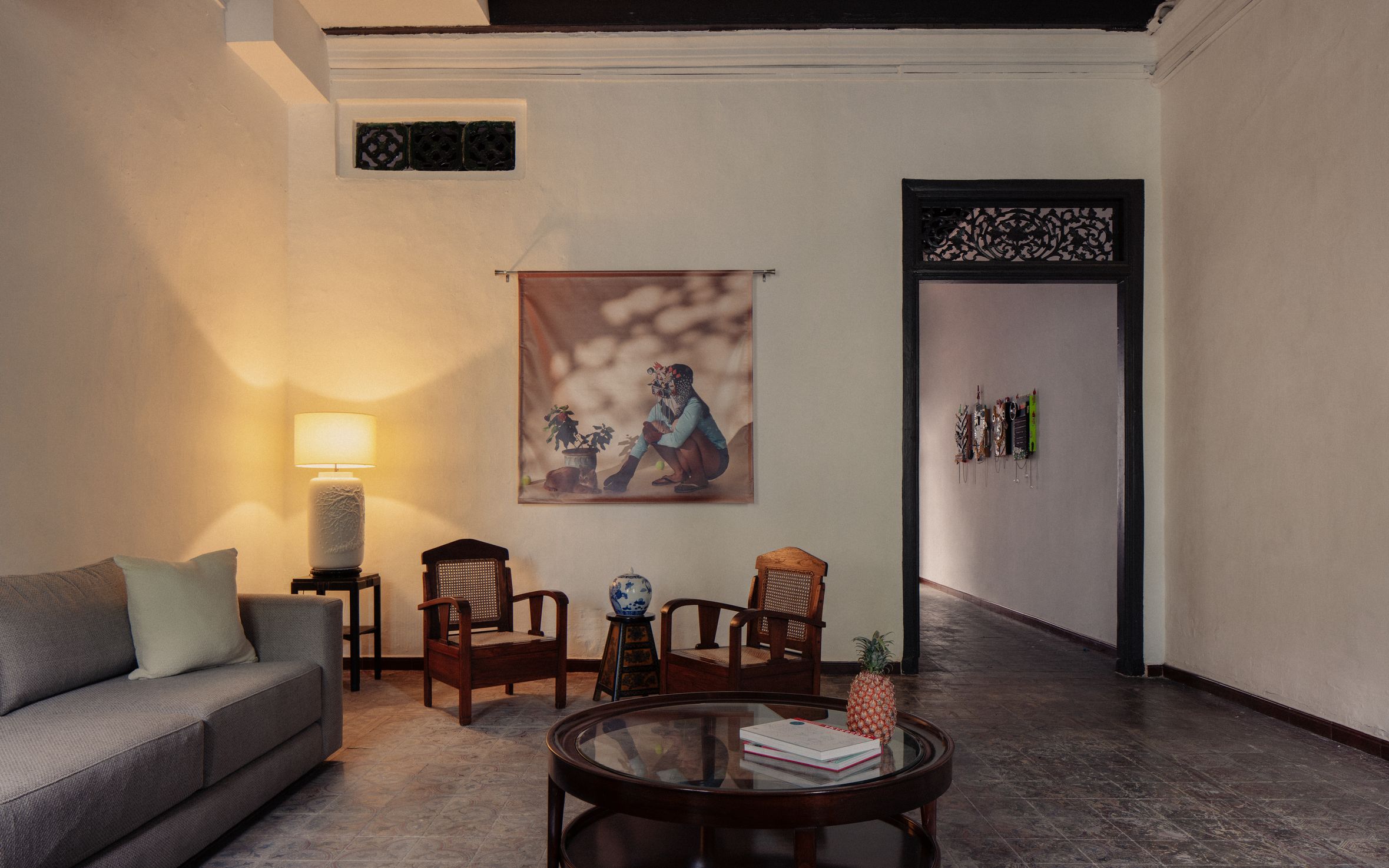 Figment Botany House, featuring flock (Cat Person), 2021, by Khairullah Rahim
Figment Botany House, featuring flock (Cat Person), 2021, by Khairullah Rahim
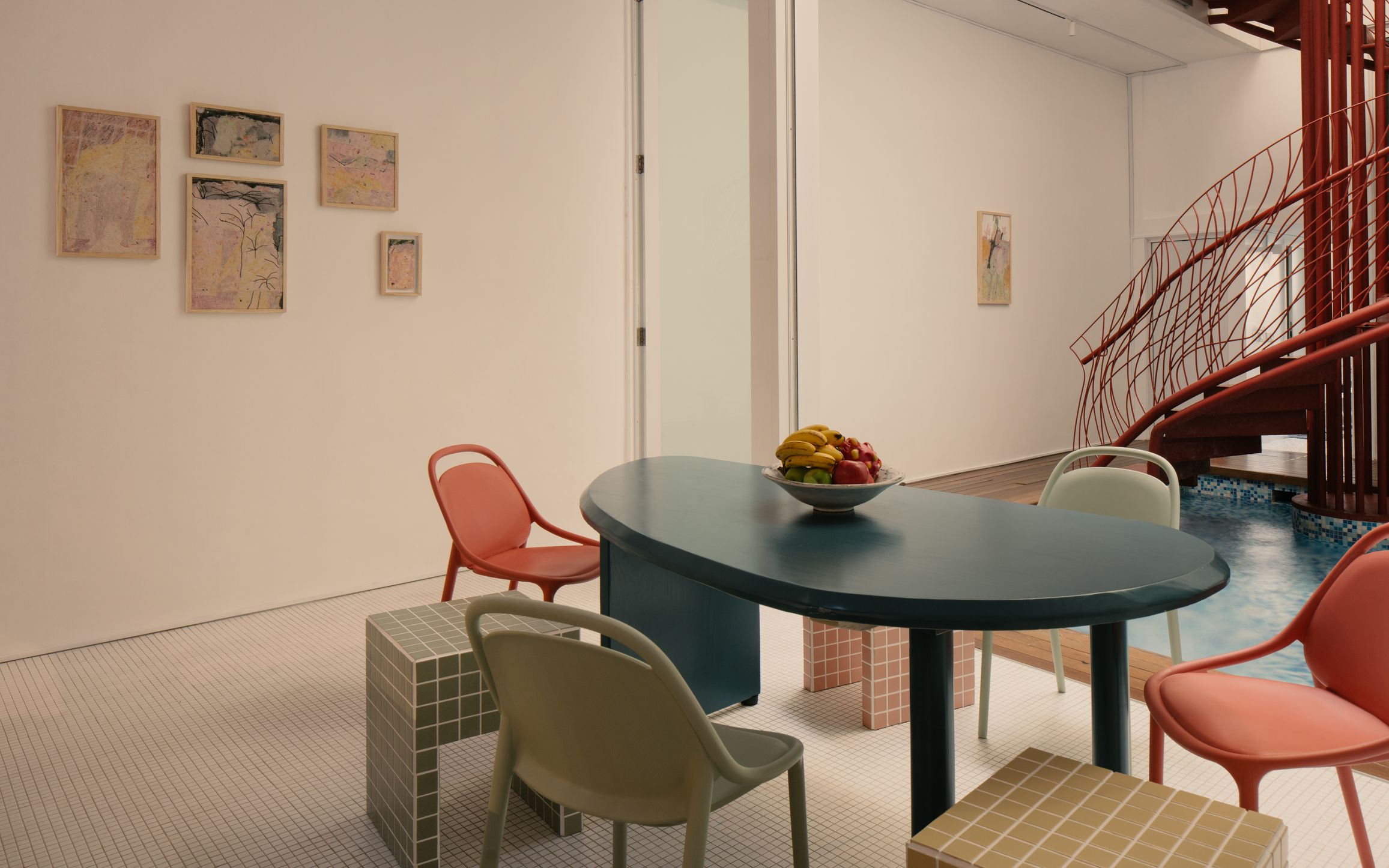 Figment Red Dragon House, featuring artworks by Nature Shankar
Figment Red Dragon House, featuring artworks by Nature Shankar
Earlier this year, four more shophouses were added to the Case Study series. This time, to facilitate an even more deliberate meeting of the arts and design, Figment partnered four local artists – Nature Shankar, Leow Wei Li, Yen Phang, and Khairullah Rahim – to showcase their works in exclusive solo shows in four conservation shophouses located in Geylang and River Valley.
In each of these shophouses, the artists’ original artworks are exhibited in the ground-floor salon space, while sketches and studies are hung up in the studios and corridors upstairs, to afford Figment’s tenants (or members, as they’re called) the opportunity to experience these art pieces as part of everyday life.
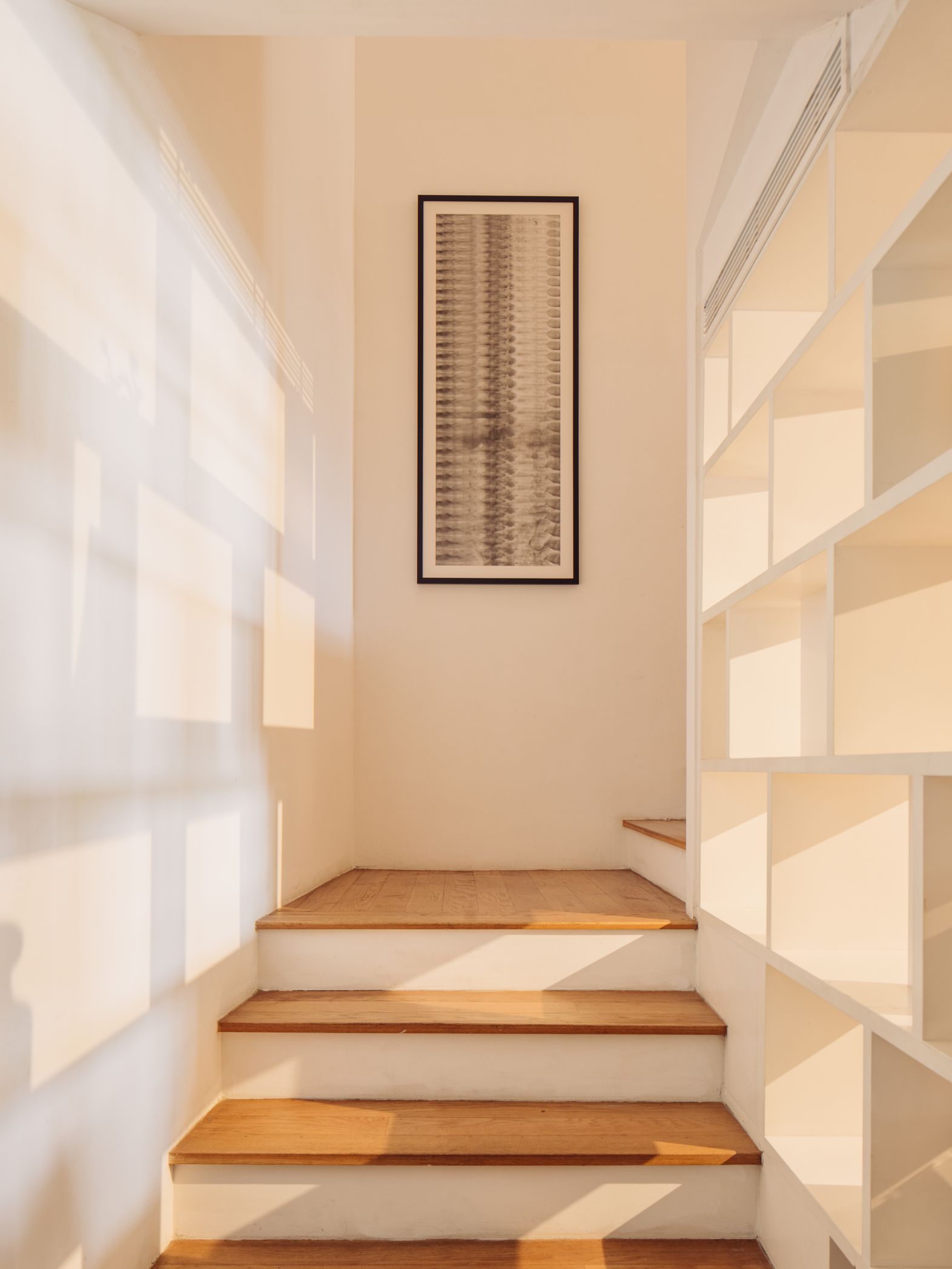 Figment Alexandra House, featuring Still. Here. (Flow No. 1), 2021 by Yen Phang
Figment Alexandra House, featuring Still. Here. (Flow No. 1), 2021 by Yen Phang
These will be exhibited in the shophouses for, at least, the next five years and are available for sale through private viewings with Figment curators. Studio visits, talks, and workshops with the artists are in the works. The intention, says Low, is to “provide a more approachable site for talented local creators to comfortably network with arts patrons, especially young emerging collectors.
“Having great art displayed in the comfort of your home and members getting to know the artist behind the works personally over house dinners can make the arts much more approachable. With the Case Study homes, art has basically broken out of the high-security ‘white cube gallery’ and come home,” he elaborates.
“We hope our members will eventually come to see the works as their own and look to purchase and take the works with them when they leave Figment.”
- BRINGING THE ARTS HOME
- SHAPING THE FUTURE
- FROM HOME TO THE WORLD
SHAPING THE FUTURE
The long-term goal is to eventually steer Figment’s members to see themselves as “community patrons” of local artists, able to join forces with government grants and prolific art patrons in providing sustained support to the local art community. As part of this “Community Patronage Model”, the four artists will each get 10 per cent of the rental profits from the respective shophouse their works are displayed in for the next five years or until their works are sold.
From April 2022, all Figment members and creators will also be issued blockchain tokens, $FIGMENT, a digital asset that would be a part of the creators’ compensation package on top of their cut of rental proceeds. It will also be their ticket to Figment residencies, overseas retreats and curated events, and access to Figment’s network of existing investors and seasoned art collectors – potential patrons for their future projects.
For members, $FIGMENT will allow them to vote on creative commissions by Figment, including future Case Study homes, and have a say in shaping their living environments. Low likens it to a “next-generation rewards program”, much like owning a country club membership where members are able to vote on key decisions within the community. Token holders can also access benefits that range from exclusive Figment merchandise and Non-Fungible Token (NFT) drops to complimentary stays in Figment homes.
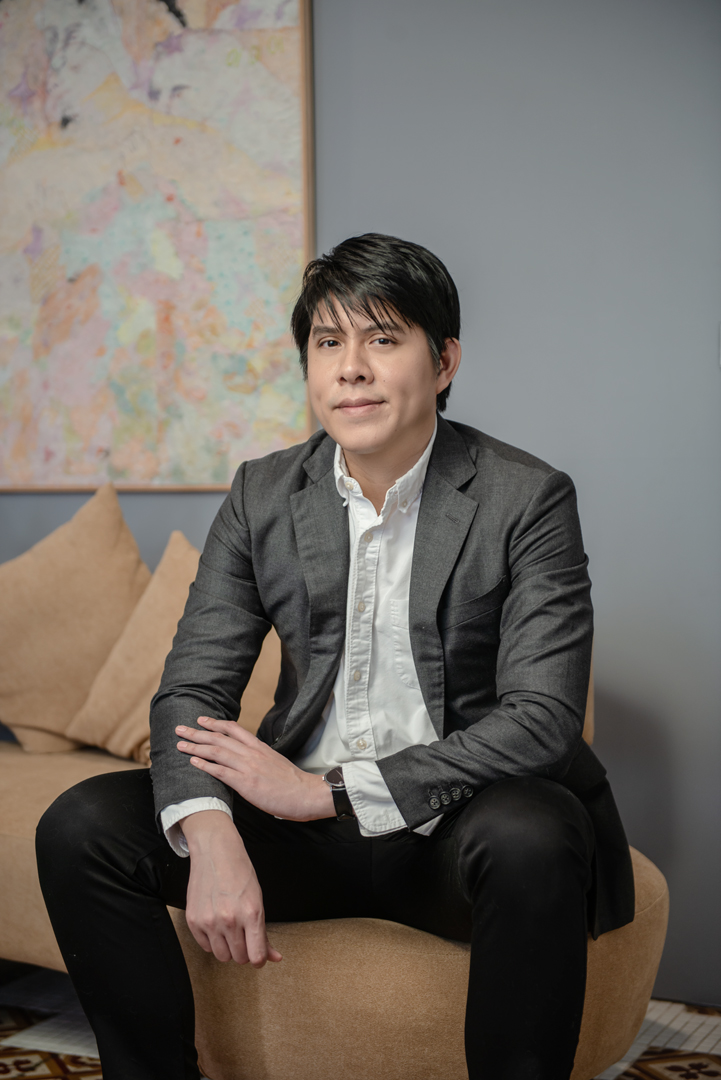
Of these initiatives, Low acknowledges that they are simply “experiments” with new models of patronage, and Figment has, by no means, found the answer to a perfect support system for the arts scene. However, he is certain that what they’re doing is a step in the right direction.
“We’d like our community to be more involved in the process, or ‘in dialogue’ with the creatives, and I think these help them better identify as being patrons of the arts.”
- BRINGING THE ARTS HOME
- SHAPING THE FUTURE
- FROM HOME TO THE WORLD
FROM HOME TO THE WORLD
The pressure to succeed at any endeavor might be an Asian fixation, but the freedom to experiment, sans the demand of perfection, is arguably more crucial for the local arts community to evolve and thrive. Figment’s role, Low believes, is to “continually break new ground, even if not all plans ‘make it’.”
“Human beings tend to resist change, especially if they are benefitting from the existing system. It’s just human nature. New ideas take time to spread and build momentum. Nevertheless, we should always be playing on the margins and broadening mindsets – be it mixing up real estate rentals with fine art or choosing to expand into the metaverse rather than to Dubai. That’s the real work we’re here to do.”
 The pool at the Figment Artist village
The pool at the Figment Artist village
And so, Figment’s work to support the arts continues. To further the reach of its Community Patronage Model, the company is looking to launch its inaugural Creator Residency Programme in mid-2022. Here, 10 artists or craftsmen will be invited to engage in artistic discourse and collaboration and lead digital workshops for Figment members in their respective disciplines, whilst on a complimentary three-month stay at Figment Artist Village, a residence specially set up for the purpose of retreat. After the completion of the Programme, Figment may purchase selected works to be featured in Figment’s existing or future spaces.
Through this residency programme, it will also onboard emerging creators into the NFT space, to help them create an additional income stream.
“Earning royalties of 10 per cent from all future transactions for NFT works is game-changing for creators,” says Low. “A direct relationship with their patrons that bypasses intermediaries is also similarly empowering.”
Even when on the surface, it looks as though the company is venturing into spaces unknown, far away from its core business. However, these new ideas and experimentation are always anchored to the heart of what Figment is about – facilitating communication across cultures.
“As Figment helps global citizens integrate into our local neighborhoods, we are communicating across cultures. We do this by infusing a strong sense of place and community into our spaces,” says Low. “Ultimately, I see Figment’s work as crafting the building blocks of our identity, no matter online or offline.”








 Figment Botany House, featuring flock (Cat Person), 2021, by Khairullah Rahim
Figment Botany House, featuring flock (Cat Person), 2021, by Khairullah Rahim
 Figment Red Dragon House, featuring artworks by Nature Shankar
Figment Red Dragon House, featuring artworks by Nature Shankar
 Figment Alexandra House, featuring Still. Here. (Flow No. 1), 2021 by Yen Phang
Figment Alexandra House, featuring Still. Here. (Flow No. 1), 2021 by Yen Phang

 The pool at the Figment Artist village
The pool at the Figment Artist village




 Back
Back
